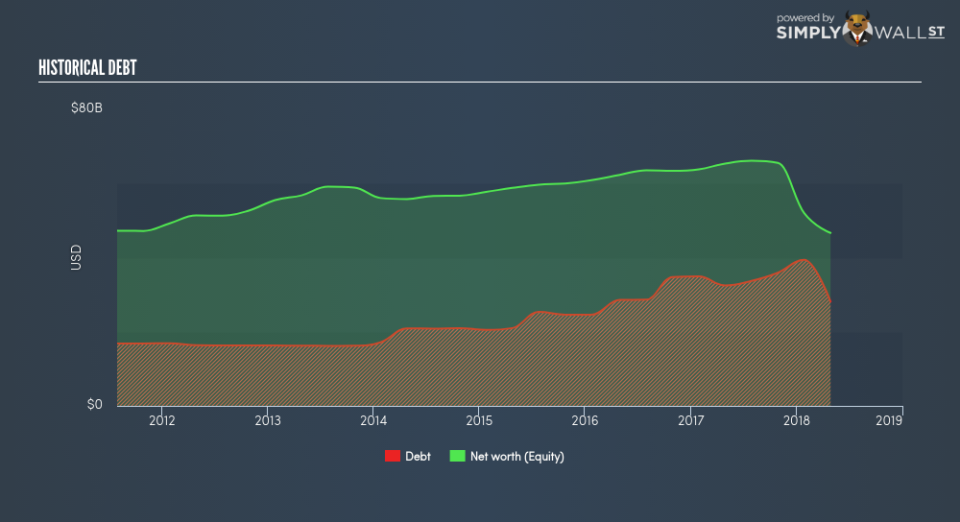Is Cisco Systems Inc’s (NASDAQ:CSCO) Balance Sheet A Threat To Its Future?

Investors seeking to preserve capital in a volatile environment might consider large-cap stocks such as Cisco Systems Inc (NASDAQ:CSCO) a safer option. One reason being its ‘too big to fail’ aura which gives it the appearance of a strong and stable investment. But, its financial health remains the key to continued success. Let’s take a look at Cisco Systems’s leverage and assess its financial strength to get an idea of their ability to fund strategic acquisitions and grow through cyclical pressures. Note that this information is centred entirely on financial health and is a high-level overview, so I encourage you to look further into CSCO here. See our latest analysis for Cisco Systems
How does CSCO’s operating cash flow stack up against its debt?
CSCO’s debt levels surged from US$28.64b to US$33.72b over the last 12 months , which comprises of short- and long-term debt. With this increase in debt, CSCO currently has US$70.49b remaining in cash and short-term investments for investing into the business. On top of this, CSCO has produced cash from operations of US$13.88b during the same period of time, leading to an operating cash to total debt ratio of 41.15%, meaning that CSCO’s debt is appropriately covered by operating cash. This ratio can also be a sign of operational efficiency for loss making companies since metrics such as return on asset (ROA) requires a positive net income. In CSCO’s case, it is able to generate 0.41x cash from its debt capital.
Can CSCO pay its short-term liabilities?
With current liabilities at US$27.58b, it appears that the company has been able to meet these obligations given the level of current assets of US$83.70b, with a current ratio of 3.03x. Though, anything about 3x may be excessive, since CSCO may be leaving too much capital in low-earning investments.
Is CSCO’s debt level acceptable?
CSCO is a relatively highly levered company with a debt-to-equity of 60.30%. This isn’t surprising for large-caps, as equity can often be more expensive to issue than debt, plus interest payments are tax deductible. Since large-caps are seen as safer than their smaller constituents, they tend to enjoy lower cost of capital. But since CSCO is currently unprofitable, there’s a question of sustainability of its current operations. Running high debt, while not yet making money, can be risky in unexpected downturns as liquidity may dry up, making it hard to operate.
Next Steps:
CSCO’s high cash coverage means that, although its debt levels are high, the company is able to utilise its borrowings efficiently in order to generate cash flow. This may mean this is an optimal capital structure for the business, given that it is also meeting its short-term commitment. This is only a rough assessment of financial health, and I’m sure CSCO has company-specific issues impacting its capital structure decisions. I suggest you continue to research Cisco Systems to get a more holistic view of the large-cap by looking at:
Future Outlook: What are well-informed industry analysts predicting for CSCO’s future growth? Take a look at our free research report of analyst consensus for CSCO’s outlook.
Valuation: What is CSCO worth today? Is the stock undervalued, even when its growth outlook is factored into its intrinsic value? The intrinsic value infographic in our free research report helps visualize whether CSCO is currently mispriced by the market.
Other High-Performing Stocks: Are there other stocks that provide better prospects with proven track records? Explore our free list of these great stocks here.
To help readers see pass the short term volatility of the financial market, we aim to bring you a long-term focused research analysis purely driven by fundamental data. Note that our analysis does not factor in the latest price sensitive company announcements.
The author is an independent contributor and at the time of publication had no position in the stocks mentioned.

